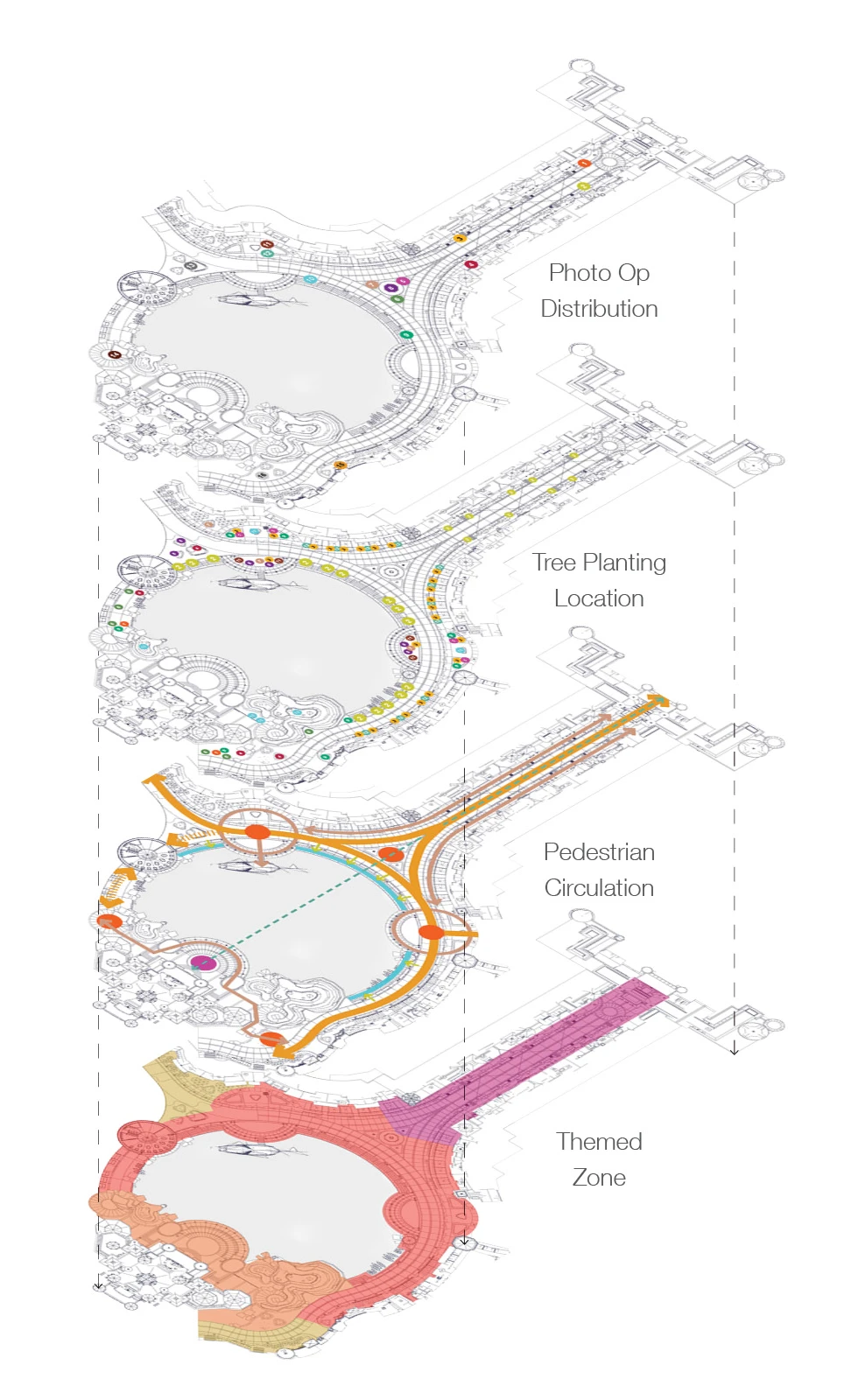Greenery plays a crucial role in creating an immersive and memorable park experience. While the current trend may focus on storytelling pedestrian traffic, hardscaping and theming, it's important to remember the benefits of incorporating greenery into the design.
A perfect balance between greenery and hardscape can enhance the overall aesthetic of the theme park and create a more natural and inviting environment. Not only does it add visual interest and beauty to the park, but it also serves a practical purpose:
Immersive Sensory Effects
Greenery in theme parks offers more than just visual appeal and practical advantages. It engages multiple senses, from the soothing rustle of leaves to the earthy aroma of foliage.
These sensory experiences have a tangible impact on visitors, e.g. reducing stress levels, boosting mood, and enhancing overall well-being. This holistic approach not only pleases the eye but also nurtures a deeper connection between visitors and the natural world, through touch, smell, sound and maybe taste. All of this enhances the overall park's immersive experience.
Comfort and Sustainability
Greenery in theme parks offers a multitude of environmental benefits crucial for sustainability and guest comfort. Firstly, trees and plants act as natural carbon sinks, absorbing carbon dioxide from the atmosphere and aiding in carbon capture and storage, thus mitigating the park's carbon footprint. Additionally, greenery plays a pivotal role in temperature regulation, providing cooling effects through evapotranspiration and shading, which is especially vital in hot climates.
Moreover, trees and vegetation serve as effective air pollution filters, trapping airborne pollutants and improving air quality for park visitors. Furthermore, strategically placed greenery helps control wind speed and direction, creating more pleasant microclimates within the park and reducing wind-induced discomfort.
In terms of flood mitigation, vegetation plays a crucial role in absorbing rainwater and filtering the surface runoff, thereby minimizing the risk of flooding during heavy rainfall events.
Lastly, the abundant shade provided by trees and foliage enhances visitor comfort and reduces the need for artificial cooling measures, contributing to energy conservation and overall sustainability efforts within the park.
Cultural Benefits
Greenery within theme parks holds multifaceted significance, intertwining aesthetic, cultural, recreational, pedagogical, eco-tourism, and eco-therapy values. From an aesthetic standpoint, lush landscapes and botanical displays contribute to the park's visual allure, enhancing its overall beauty and charm. Moreover, greenery often reflects and preserves cultural heritage, with themed gardens and native plantings celebrating local flora and traditions.
Recreational opportunities abound amidst green spaces, offering visitors serene settings for relaxation and outdoor activities. Beyond leisure, these natural environments serve as educational platforms, providing opportunities for outdoor learning and environmental awareness.
In the realm of eco-tourism, verdant park landscapes attract nature enthusiasts and conservation-minded travellers, promoting sustainable tourism practices and fostering an appreciation for biodiversity and indigenous species that is location-specific.
Finally, greenery offers therapeutic benefits, with eco-therapy initiatives leveraging park environments to promote mental well-being, stress reduction, and connection with nature, underscoring the profound significance of green spaces within theme parks.

Landscaping plays a role, in the costs and upkeep of theme parks. Although the initial investment in thought-out landscaping design may appear substantial it leads to long-term advantages. Thoughtful landscaping not only enhances the park's appeal but also helps in reducing maintenance expenses.
Designed green spaces can lessen the need for watering, trimming and chemical treatments thus reducing labor and material costs. Moreover positioned plants can offer shade decreasing the reliance, on energy-intensive cooling systems during hot weather and lowering operational costs.
Additionally, lush green surroundings contribute to guest well-being by creating peaceful atmospheres fostering experiences that encourage visitors to repeat the visit and enhance the park's reputation. It's an investment that not only enhances the park's aesthetics but also bolsters its long-term sustainability and financial resilience.
In summary, landscaping is indispensable to theme park design, offering guests an immersive, memorable journey while enhancing the park's climate comfort, visual appeal and functionality. An ideal theme park design can craft experiences by blending lush greenery with architectural elements in a harmonious way. Cheers!